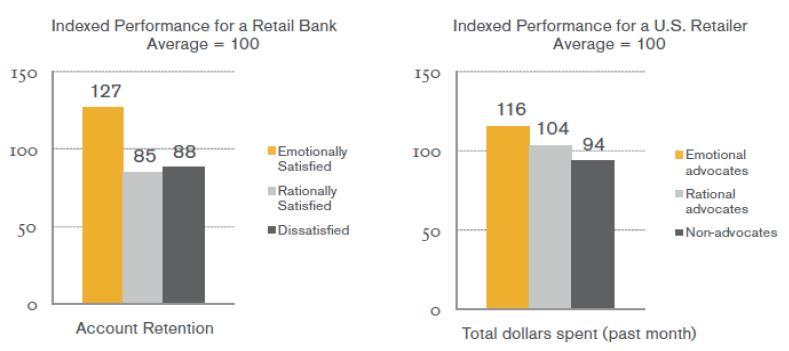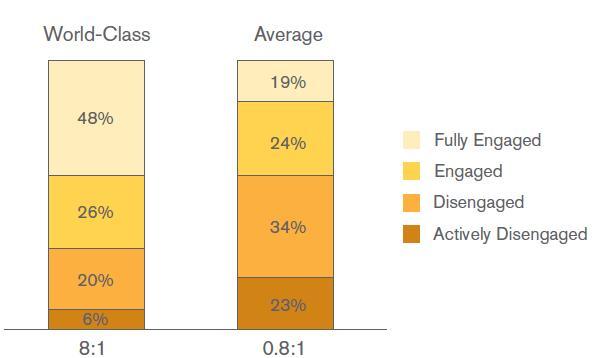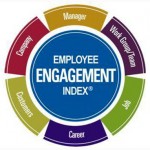Gallup’s Customer Engagement Index
In a previous blog post Employee Engagement was presented as an important driving force of organizational success and financial performance. It has a significant influence on a large number of factors that drive organizational performance outcomes. In successful organizations, Employee Engagement Index often transcends from a human capital performance measure into a strategic approach supported by tactics that drive improvement and organizational change (Gallup, 2008).
Today’s post explores human behavioral influence on organizational performance, by looking at Customer Engagement Index. This performance metric was developed by Gallup, in order to supplement Employee Engagement Index in the quest for building a strong platform for organizational performance optimization and bottom line improvement.
The need for an improved customer engagement measure was justified by the Gallup researchers based on previous Gallup research that “has shown that many popular metrics – like Customer Satisfaction, Customer Loyalty, and Advocacy (including Net Promoter) – do not consistently demonstrate strong links to key business outcomes” (Gallup, 2009).
Gallup’s Customer Engagement Index is informed by behavioral economics , whose leading proponents theorize that “only 30% of human decisions and behaviors are actually driven by rational considerations – shich means that more thant two-thirds of consumer loyalty and spending decisions are based on emotional factors” (Gallup, 2009).
Both academic studies and common sense practice have showen that emotionally connected customers or engaged customers are more profitable for the organization if compared with average or rational counterparts. The 2009 Gallup research study “ Customer Engagement: What’s your engagement ratio” successfully demonstrates the impact of emotionally satisfied customers (fully engaged customers) on marketplace performance (see results above).
Customer Engagement Index as initially built by the Gallup researchers is based on a survey with 11 questions from which 8 are emotional attachment questions and 3 are rational loyalty questions. According to McEwen et al (2003) the metric provides with a far stronger connection to the business outcomes than other satisfaction measure can provide. By looking into important emotional factors such as confidence, integrity, pride and passion, Customer Engagement Index can provide the true state of company’s customer relationship and its influence to the final business outcome.
Using the input from the index survey, Gallup researchers categorize customers in 4 distinct groups:
• Fully engaged customers – are emotionally attached and rationally loyal
• Engaged customers – are rationally loyal and start to become emotionally attached
• Disengaged customers – are emotionally and rationally neutral
• Actively disengaged customers – emotionally detached and actively adverse
Based on these categories Gallup built the Customer engagement ratio as a macro level indicator that allows organizations to track the ratio of engaged to actively disengaged customers. Gallup research reveal that:
• On average the ratio of engaged to actively disengaged customers is 0,8 to 1
• In world class organizations the ratio of engaged to actively disengaged employees is 8 to 1 (Gallup, 2009)
When looking at measuring Customer Engagement Index and its relation to business performance and linking these insights to the Employee Engagement Index presented in a previous blog post, two major conclusions emerge:
• To get a complete picture of the connection between customer relationship and business performance outcomes we must look at both customer satisfaction (rationally loyal customers) and customer engagement (emotionally satisfied customers).
• Optimized performance results are obtained by companies who succeed in bringing together engaged customers and engaged employees.
Additional resources:
- McEwen, J. William (2005): What measuring customer engagement reveals, Excerpted from “Married to the brand”, Gallup Press
- Tom Lambert: “Customer satisfaction is not customer engagement: says Humpty Dumpty the Psychologist
- eab group (2010) – “KPI examples for Human Resources”
References:
- McEwen, J. Williams & Fleming, H. John (2003): Customer’s satisfaction doesn’t count, Gallup Management Journal, March 13, 2003
- Gallup Consulting (2009), Customer Engagement: What’s your engagement ratio?
- Gallup Consulting (2008), Employee Engagement: What’s your engagement ratio?

Tags: Performance Measures







